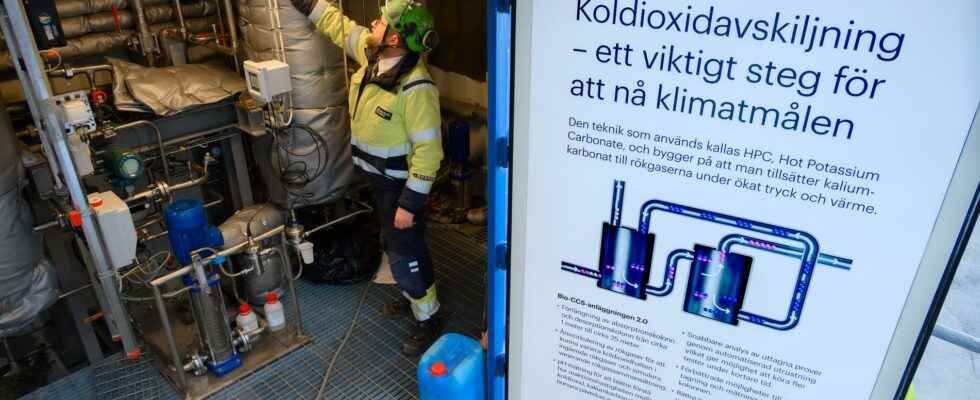Published: Just now
The government invests over half a billion kroner in capturing carbon dioxide, so-called bio-CCS. But the technology is many years ahead.
The allocation for what is known as the industrial leap will be increased by SEK 600 million in 2023, according to the government’s budget bill.
Industriklivet is a pot from which companies can apply for grants for research and pilot projects to reduce greenhouse gas emissions.
“Industry’s emissions must decrease, new climate-smart products need to be developed and technologies for negative emissions such as bio-CCS need to be developed in order for Sweden to reach the goal of net zero emissions in 2045,” says Climate and Environment Minister Romina Pourmokhtari (L) in a press release.
The grants are to increase by 600 million also in 2024 and 2025. The proposal is based on an agreement between the government and the Sweden Democrats.
However, CCS technology is many years away and is not yet available on a commercial scale. In Norway, there are two facilities that are used to capture and store carbon dioxide from gas-fired power plants. The technology is also still very expensive, more than twice as expensive as new wind power, according to the Nature Conservation Association.
The projects that exist have also had to release the captured carbon dioxide again, because there is nowhere to store it.
The government commissions Sweden’s Geological Survey (SGU) to investigate suitable locations for carbon dioxide storage. Two locations that have been pointed out, off the south coast of Skåne and Gotland, have previously been considered unsuitable, partly because they are too close to densely populated areas.
In 2022, the industrial sector comprises approximately SEK 909 million.
